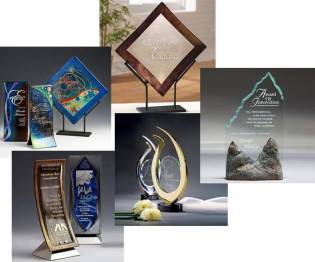brand champions
Charities - Don’t Wait Until It Gets Urgent!
 I recently received an “Urgent: Your support is needed” email. It came from a charity whose annual municipal grant was reduced by 10% for the next fiscal year. How bad was it?
I recently received an “Urgent: Your support is needed” email. It came from a charity whose annual municipal grant was reduced by 10% for the next fiscal year. How bad was it?
In the second paragraph, the CEO states that the organization has experienced a 30% cut in municipal funding over the past eight years! He asks me for help - to contact city officials and advocate on the charity’s behalf, and to show up at a city budget meeting to voice my opposition to the budget cut. As I read his plea, my instinct told me that something was wrong with this picture.
So, I did some research and uncovered a very disturbing fact. Continue reading
How Well is Your Nonprofit Engaging Millennials?
 Millennials may not represent your organization’s biggest donors, but they definitely make excellent volunteers, more frequent small-gift givers, and brand champions. Yet, many nonprofits are missing the boat on engaging this generation in ways that can work successfully.
Millennials may not represent your organization’s biggest donors, but they definitely make excellent volunteers, more frequent small-gift givers, and brand champions. Yet, many nonprofits are missing the boat on engaging this generation in ways that can work successfully.
According to The Case Foundation’s 2013 Millennial Impact Report, Millennials aren’t interested in structures, institutions, and organizations, but rather in the people they help and the issues they support.
Other important information about Millennials:
- Millennials prefer to connect via technology. They use websites and search engines primarily for information-gathering, finding volunteer opportunities, and donating online. They rely on social media and email for communicating and connecting with their networks, while mobile technology gives them instant access to all these channels.
- Millennials share in micro ways. Their interactions with nonprofit organizations are likely to be immediate and impulsive. When inspired, they will act quickly in a number of ways, from small donations to short volunteer stints, provided that the opportunities are present and the barriers to entry are low.
- Millennials facilitate (and rely on) peer influence. Peer influence plays an important role in motivating Millennials to volunteer, attend events, participate in programs, and give. Even if Millennials can’t give as much as other demographic groups, they nonetheless are willing to help raise funds for causes they care about, usually by calling on friends and family.
- Millennials volunteer along a continuum of support. Millennials are most likely to get hands-on with causes they care about when organizations offer a range of volunteer opportunities, from one-time commitments to long-term, pro-bono skills-based opportunities. Ultimately, they want to lend their knowledge, expertise, and time to help nonprofits. And when this generation forms long-term volunteer relationships, they tend to give larger gifts, as well as encourage their friends and family to contribute, too.
- Millennials give to have an impact. Millennials are consistent in their desire to see how dollars translate into people helped. They want their contributions, no matter the type or amount, to help achieve tangible results for a cause. Yes, members of this generation are more likely to give smaller amounts to multiple organizations than to focus their giving on any one recipient. But the stronger their relationship with an organization, the more likely they are to give larger gifts over time.
The study’s top takeaway: Millennials first support causes they are passionate about (rather than institutions), so it’s up to organizations to inspire them and show them that their support can make a tangible difference on the wider issue.
The question for nonprofits then becomes: How can we fully invest in this generation, immerse them in the cause, and maximize the impact of their interest, time, and giving?
Answers: Connecting with them via technology, offering micro ways to get involved and give, facilitating peer influence, offering a continuum of volunteer options, and sharing the results of their donations.
How? Build Your Organization:
B
Be unified as an organization in working with this generation. Help all leaders, both volunteer and paid, understand and agree on the need to engage Millennials.
U
Understand their environment and its complexities. Appreciate its current state, what this generation experienced growing up, and how rapid advancements of technology and culture have shaped their involvement with your organization.
I
Identify key changemakers, those Millennials seeking to make a difference with your organization. These could be staff, board members, volunteers, and donors. Don’t be distracted by stories of Millennials who don’t care. These are “outliers,” and every generation has them. You must find those who want to work with you and make change happen.
L
Lead by engagement rather than just by participation. Engagement means you understand how Millennials want to communicate, participate, lead, and challenge the organization to do better. Focus on conversational and relationship involvement with your organization.
D
Determine success. What does Millennial success look like for your organization? Create foundational standards or benchmarks. Create realistic and incremental goals that will not hinder ongoing deployment of Millennial programming.
The report is chock full of data and recommendations, so be sure to download it. When valuable information like this is available to nonprofits for free, it’s worth taking advantage of it and making any necessary adjustments to your marketing strategy.
Is your organization targeting Millennials? How? Has it been successful? If not, why not?
N.B. I’m in the middle of revising my company’s Web site, and one of the new workshops I’ll be offering is entitled, “Nonprofit Customer Engagement in a Multichannel World.”
Are You Leveraging Your Brand Advocates?
 Every organization, from small businesses to nonprofits, has brand advocates. They are the people who toot your horn, recommend your products, services, or mission, and share their passion with many others.
Every organization, from small businesses to nonprofits, has brand advocates. They are the people who toot your horn, recommend your products, services, or mission, and share their passion with many others.
Your organization doesn’t have to be an Amazon, Apple, or Google in order to have brand advocates. Have you ever asked friends or neighbors which doctors or dentists they use and recommend? How about accountants, hairdressers, or plumbers? Movies, restaurants, or vacation resorts?
We tend to trust the people we know when it comes to word-of-mouth referrals. And, now with social media, millions of us are ‘listening’ to strangers online share their reviews and recommendations on the products, services, and causes they adore.
Yesterday, I attended a presentation by Rob Fuggetta, founder and CEO of the brand advocacy platform company, Zuberance. He is also the author of Brand Advocates: Turning Enthusiastic Customers into a Powerful Marketing Force.
What I learned in the hour surprised me. The importance of brand advocates is something I have promoted for a long time. But, after hearing Fuggetta, I now know some stats that support the concept.
He cited one example from the Rubio’s restaurant chain. With every star the company received on the review site, Yelp, the company’s revenue boosted by 5-9%! That floored me.
OK, I thought. This can work well with consumer products. But, what about business-to-business companies, small businesses, and nonprofit organizations? Fuggetta says the same principles apply.
“The most valuable thing that companies can do with social media… is leveraging social media to amplify advocacy for your brand and products. Unlike listening or engagement, advocacy has provable ROI: It drives referral leads and sales.”
So, what’s in it for your small business or nonprofit? Turning your brand advocates into your marketing team allows you to get three things.
Fuggetta’s Three Rs of Advocacy:
- Recommendations.
- Referrals.
- Revenues.
Let’s look at #2. Small businesses and nonprofit organizations have never had the same types of marketing budgets as corporations. They have traditionally relied on referrals that come in slowly over the years.
If your dentist is closer to the end of his/her career rather than starting out, ask what s/he did to market during his/her career. Chances are that his/her new patients came from word-of-mouth referrals, which took time to build.
Enter the social media age, and young dentists today can leverage social media in ways that accomplish more in a shorter period of time than their older counterparts ever could. It’s the same with most other small businesses and charities.
In the past, it took many older nonprofit organizations years to build a strong infrastructure and foundation that enabled them to grow and serve their communities and missions. Today, organizations such as DonorsChoose.org have grown in a shorter time with the help of brand advocates, or champions. The organization funded $1.1 million in projects in 2003 and $46.5 million in 2012. Some of their champions include Oprah Winfrey and Stephen Colbert in addition to everyday people who care about education in the U.S.
In 2011, Fast Company published its annual ranking of the 50 Most Innovative Companies in the World that included Apple, Facebook, Google, Nike, General Electric… and DonorsChoose.org! It was the first time a charity had made that list.
Another point Fuggetta makes in his book is that traditional marketing and advocate marketing (as he calls it) can complement each other very effectively. That resonated for me. In addition to using online testimonials, using them in paid advertising can “double performance of their paid media.”
So, what has your small business or nonprofit been doing with its brand advocates? Do you know who they are? How are you leveraging their love for you?
Don’t Be Chintzy When Honoring Donors, Volunteers, and Employees
If you’ve ever worked or volunteered for a charitable organization, or made a significant donation to a cause, how did the organizations show their appreciation to you?
It’s a fairly common practice to give out awards and gifts of appreciation to those who help move a nonprofit’s mission forward. What many organizations may not realize is that the award or gift they give out speaks volumes about their brands.
I recently read a newspaper story of a woman who had volunteered for 30 years. That’s quite a milestone. The charity duly awarded her a framed certificate. From the black and white photo, the frame appeared solid and attractive. But, I couldn’t help thinking that the organization could have sprung for something more creative and appealing.
Several years ago, while working for a nonprofit organization, I was part of a discussion on donor recognition. The organization was honoring a small group of major gift donors at a cocktail reception and wanted to give them appreciation gifts.
After several suggestions, the CEO decided to use up a stash of specially minted commemorative coins that had been in storage for a couple of years. A very nice gesture, indeed, but in reality, what would people do with the coin? What value did it have to them?
Although the coins were decorated with the organization’s anniversary logo, they were legal tender and worth 10¢ each. How easy would it have been to slip the coin into a pocket or wallet and use it on their next purchase?
Donors, who had given several hundreds or thousands of dollars for the campaign, were honored with a gift valued at 10¢. Now, you can argue that the value isn’t important; it’s the spirit of the gift that counts. After all, these are charities we’re talking about, right?
I disagree. Everything a nonprofit does represents its brand. Organizations do not have to spend a fortune to show appropriate appreciation to their donors, volunteers, and employees. But, being chintzy is counterproductive to a positive brand experience.
When someone makes a gift of $10,000, as an example, what should they receive? A letter of appreciation signed by the CEO, executive director, or board chair? A personal telephone thank you? A handwritten thank you note? A paper certificate in a $3 plastic frame?
There are so many creative and affordable ways to show appreciation that will resonate with recipients. After all, they are the mission’s brand champions, so the more they spread positive word-of-mouth, the greater the chances are that their friends and colleagues may make a gift.
So, what to give?

Distinctive appreciation gifts in crystal, stone, and glass
For larger donations, I use the 1% rule. For a $10,000 donation, a gift valued at $100 is not excessive. Choose something that recipients will use or display in their homes or offices, creating conversation.
A good quality pen with the charity’s logo imprinted or laser-engraved on it is likely to be used and not thrown into a drawer. A crystal engraved award is more likely to be displayed in recipients’ homes or offices than something plastic or paper.
And, for really large donations and milestone volunteer or employee anniversaries, you can buy gorgeous engraved pieces of crystal, stone, or glass art. Is spending $150-250 too much for people who give $25,000+, or volunteer or work for an organization for 25-30 years?
Sure, the reaction may be, “You shouldn’t spend charitable dollars on gifts.” But, chances are, recipients will be glowing when they have something beautiful to use or display, and they’ll talk about it.
After all, investing in donors, volunteers, and employees comes back to nonprofits in bigger ways. So, don’t be chintzy!
What types of appreciation gifts has your organization given out? Have you ever received an appreciation gift from a nonprofit?
What are your thoughts?





